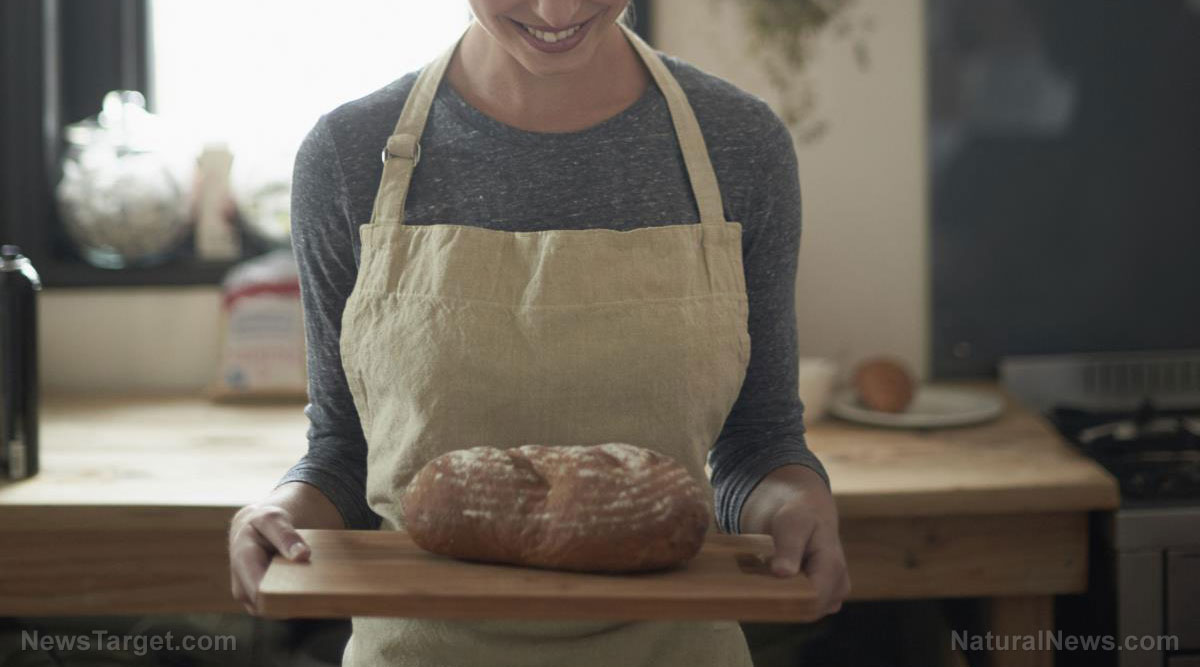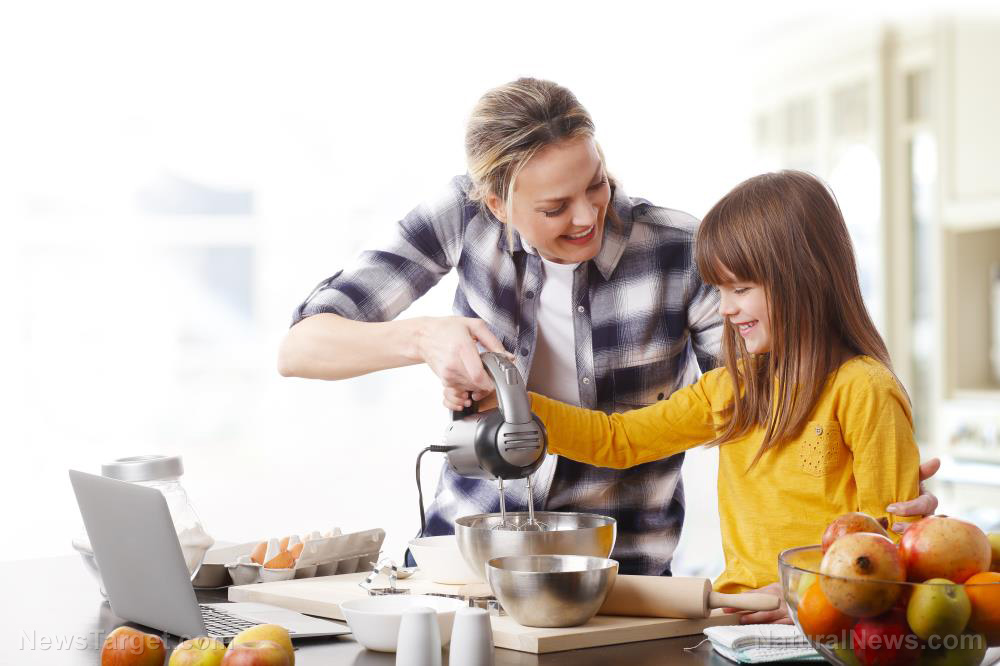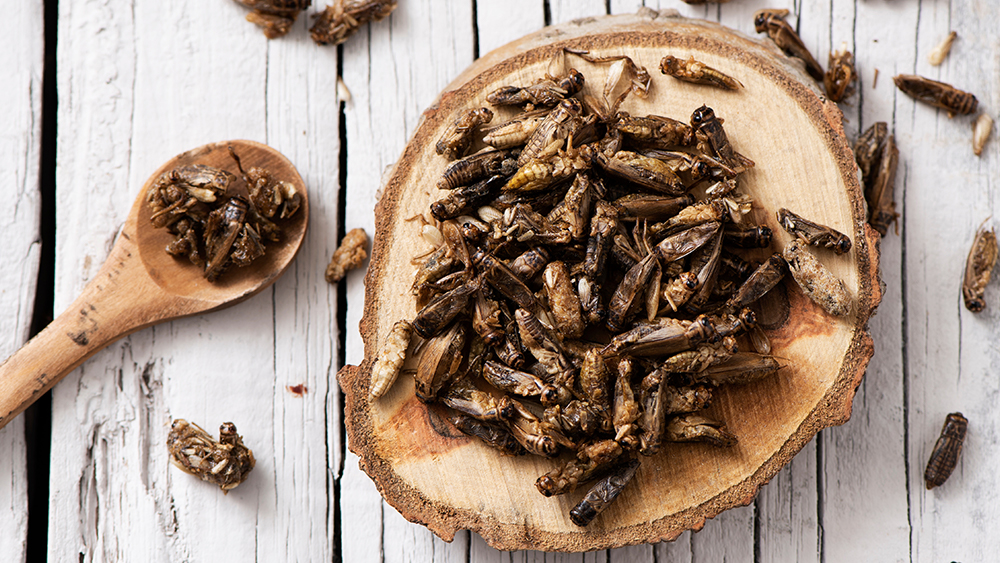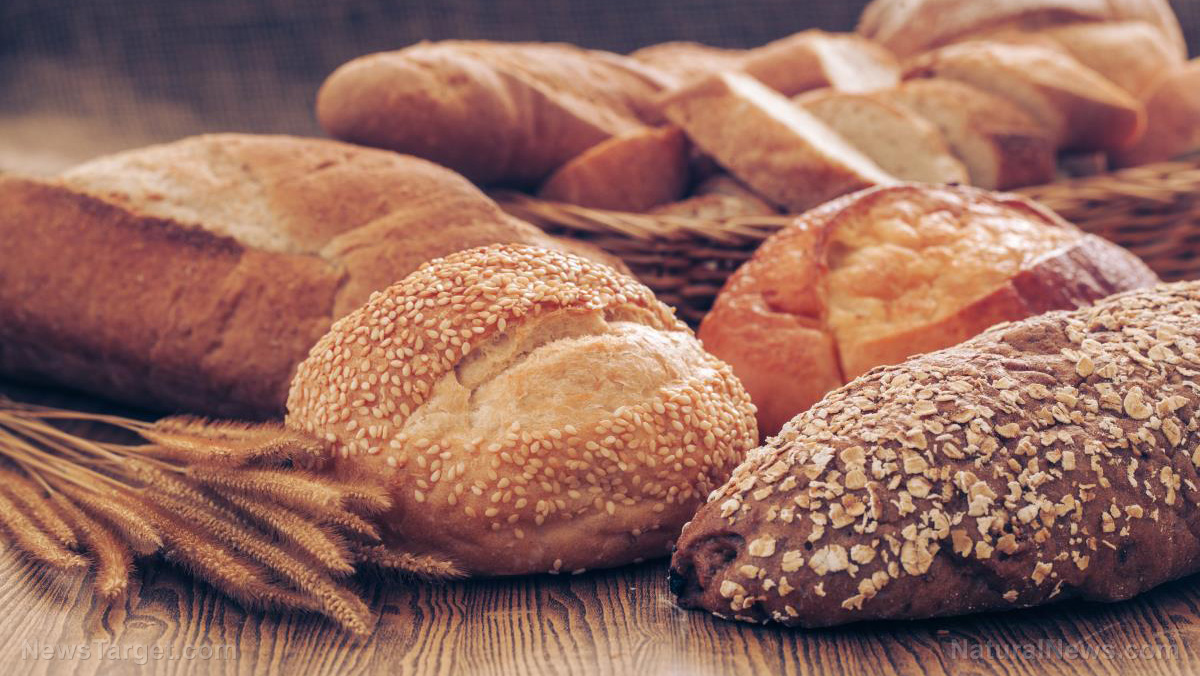
In the past, pioneers learned how to make bread without an oven.
When SHTF, you can make no-oven bread using the recipes below. (h/t to PreparedSurvivalist.org)
Bannock bread
Frying pan bread is more commonly known as bannock bread. The recipe is simple, but you have to be careful so you don't burn the bannock.
Bannock, which comes from the Gaelic word bannach, was once a generic term for bread in Scotland and other areas in the British Isles, where wheat and ovens were rare.
Bannock requires only a handful of ingredients, is affordable and endlessly versatile.
Ingredients:
- 2 cups of flour
- 1/2 cup of dry milk powder (optional)
- 2 tablespoons of shortening
- 2 teaspoons of baking powder
- 1/2 teaspoon of salt
- Water
Preparation:
- Before you add the water, cut in the shortening using a couple of knives or a pastry cutter.
- When the texture of the dough appears crumbly, slowly add water until you get a putty-like consistency.
- Oil your cast-iron frying pan. Alternatively, you can use bacon or salt-cured pork.
- Pour the mixture into the pan.
- Place the pan over some coals or on the stovetop and brown for about three to five minutes. Flip the bread over in the pan and finish the other side.
- Try to flip the bread several times to cook it through and to prevent burning.
- When you think the bread is done, poke the center of the bread with a toothpick. If the toothpick comes out clean and dry, the bread is done. If not, let the bread rest in the pan off the heat until it finishes baking.
Bread on a stick
Bread on the stick, which is a rather simple recipe as the name implies, was popular with mountain men and people who had sourdoughs.
If you don't have a lot of time to cook or are low on supplies, this recipe is worth trying. All you need to do is wrap a long roll of dough around the end of a shaved stick and set the stick over the fire. (Related: Homemade recipes: No-knead artisan bread.)
The stick with the dough is usually inserted into the ground at an angle to the fire and turned occasionally.
You can also give the finished bread a pretzel-like texture by dipping a clean hand in water and spritzing the dough as it bakes.
Ingredients:
- 2 cups of flour
- 1 cup of water
- 3 tablespoons of sugar
- 1 teaspoon yeast
- Extra flour (for dusting and rolling)
Preparation:
- Combine and mix the dry ingredients, then slowly add the water.
- Create a dough ball that you can roll out into a rope of dough. Let the dough rest for about 10 minutes after kneading, then wrap it around the end of a cooking stick.
- The ideal dimension for the cooking stick is about an inch in diameter with a pointed end. Choose a clean stick that is at least three feet long, then use your knife to shave the bark from it.
- Use the reserved flour to keep the dough from sticking to the shaved stick.
- If you are having trouble getting the dough to stick, insert one end of the dough onto the point at the end of the stick, then try to either overlap the dough as it’s wound or push it onto a small branch about 10 inches down the stick.
- Set the dough on the stick aside and wait a bit so it can rise a little more. If you are outdoors, carefully push the stick into the ground away from the fire.
- When it’s time to bake or roast your bread on a stick, push a different sharpened stick into the ground at an angle to the fire. Support the second stick with rocks.
- When baking the bread on the stick, you don’t want a roaring fire. You can also cook it on a bed of coals.
- Turn the stick from time to time, but be careful and wear gloves because the stick will get hot. Spritz the dough with a bit of water flicked from your fingers to give the dough a tasty pretzel-like finish. Toss some salt on the wet dough toward the end of cooking after the final spritz of water.
- When the bread looks done, tear a piece off and try it. If the bread needs more time to cook, slowly turn it over the coals.
Hoe cake
"Hoe cake" is a pioneer cornbread that was baked on the curved metal side of a hoe. Pioneers made hoe bread by placing a clean hoe next to the fire and letting the hot iron cook one side of the hoe cake as the heat from the fire cooked the other side.
If you have a cast-iron skillet, you can use it to finish cooking the hoe cake. It’s the same concept, but you need to flip the hoe cake from time to time to finish both sides.
Ingredients:
- 1 cup cornmeal
- 1 cup flour
- 3/4 cup of buttermilk
- 1/3 cup plus one tablespoon of water
- 1/4 cup of vegetable oil or bacon grease
- 2 Eggs
- 1 tablespoon sugar
- Oil (for the hoe or pan)
Preparation:
- To make hoe cakes the old-fashioned way on the side of a hoe or the side of a large ax, you will need a fairly thick batter that will stick to the side of the metal as you cook it.
- Alternatively, you can make hoe cakes using a cast-iron pan. Oil the pan and drop the batter into the pan once it’s hot. Turn the hoe cakes once or twice to cook them through and prevent them from burning.
No oven bread rolls
This recipe is a modern one, but like the pioneer bread recipes above, you can make it even without an oven.
Ingredients:
- 4 cups flour (With extra for kneading.)
- 1 cup warm milk
- 1/4 cup sugar
- 4 tablespoons melted butter
- 1 tablespoon yeast
- 2 teaspoons sugar for proofing the yeast
- 1 teaspoon salt
- 2 Eggs, plus 1 egg for the egg wash
Preparation:
- Dissolve the yeast and sugar in warm milk.
- In another bowl, combine the butter and eggs. Set the mixture aside.
- Get a large bowl and combine the flour, salt and sugar. Use a spoon to make a well in the center and add the yeast and the egg and butter mixture. Mix until you have a soft dough.
- Transfer the dough to a lightly floured surface and knead it until it is smooth and elastic. Kneading should take about 10 minutes by hand and at least seven minutes if you are using a mixer.
- Place the dough in a very large oiled bowl. Smear a bit of oil on the surface of the dough, then set it aside in a warm place for one hour or so until it rises and doubles in size.
- Deflate the dough and turn it out onto a lightly floured surface.
- Divide the dough into 16 equal pieces. Turn the small dough balls into round balls and place them in the cast iron skillet or pan, then leave the dough to rise for another 30 minutes.
- Place the pan on low heat and cook for 10 minutes. Flip the dough to the other side and cook for an additional five minutes.
- Remove the pan from heat and set it aside. You can start serving once the bread has cooled down.
Learn simple pioneer recipes like bannock bread or bread on a stick so you can make bread for your family even without an oven.
Visit NaturalNewsRecipes.com for more recipes that you can try at home for your family.
Watch the video below to find out how to make bread filled with honey and nuts without an oven.
This video is from the yummy goodies! channel on Brighteon.com.
More related stories:
Homemade sourdough bread a boon for preppers.
8 Survival bread recipes for preppers.
Prepping essentials: 11 Forever foods for your food storage pantry.
Sources include:
Please contact us for more information.






















